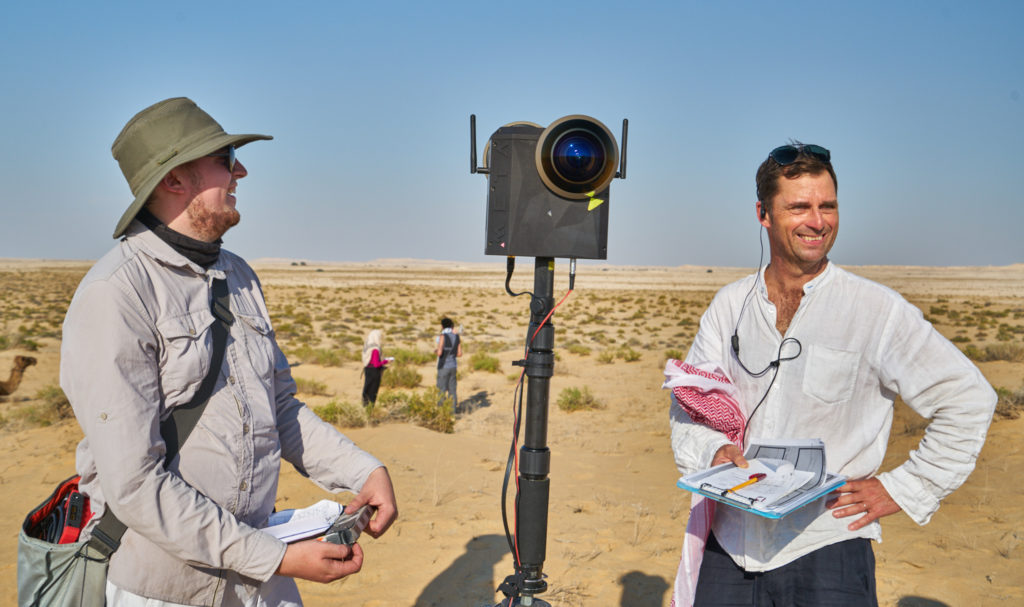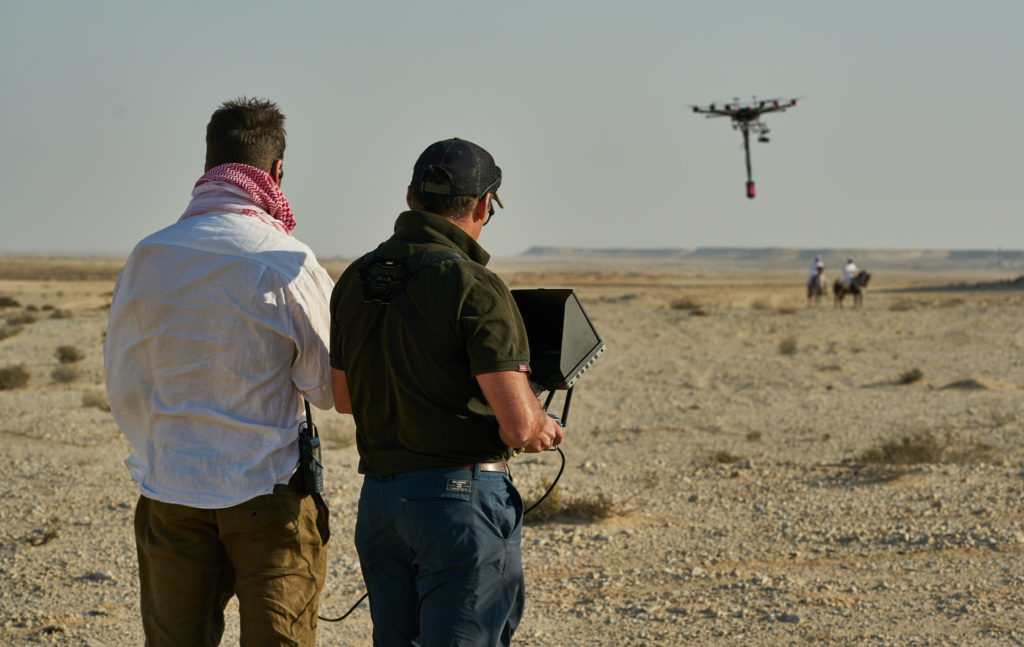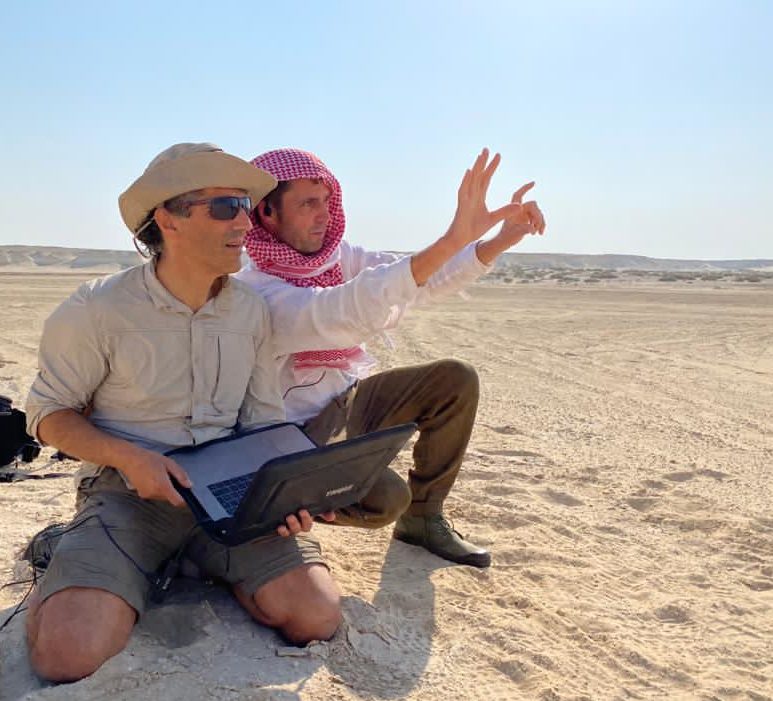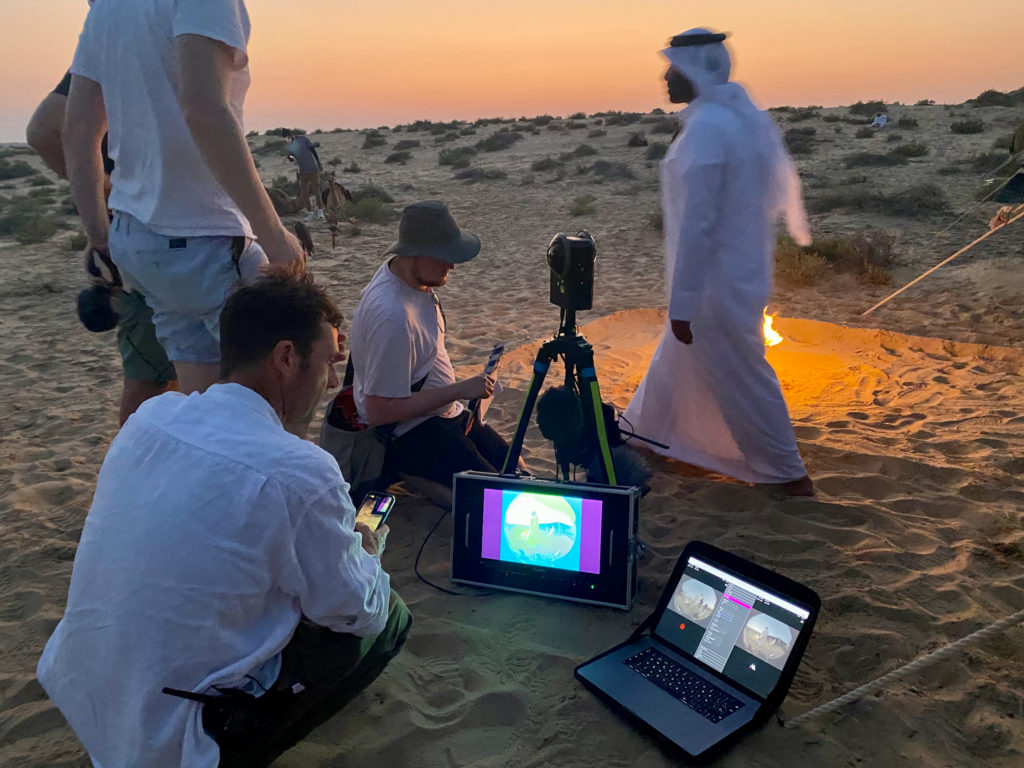Guest post by Jason Glenister, VR Director at Visualise.
I count myself very fortunate to have worked at all last year, considering the chaotic world-wide situation. But as a Director I was also lucky to have experienced a shift in film-making possibilities, shooting with the new Meta camera. Two full-glass opposed lenses and perfectly balanced sensors, delivered everything I wanted from a 360 video camera and so much more.

Test bed
Outside of the strangeness and oddity that is trying to create films in the age of Corona (or do any simple task) the production was the perfect field-test for me using a comparable 360 video camera. The reason? As a team, Visualise and I were all back at a location we had filmed at nearly a year ago to the day, for the same client – the cultural ministry of Qatar. Once again, we were tasked with creating four films that reflect the history and heritage of this middle-eastern country.
This meant filming in extreme conditions – intense desert heat, scouring sand (that literally gets everywhere) and sailing in the middle of the Arabian Gulf. We were constantly swapping from tripod, cable-cam to Mantis – all with the additional 360 filmmaking challenges. The critical difference was that the year before, we had used the Kandao Obsidian, which was robust enough to weather the extreme conditions most of the time. The second time around, we managed to put forward the Meta camera. It seemed the best tool for the job of capturing what I saw in my mind’s eye.

The mind’s eye
I suddenly leapt from simply ‘showing’ a location or scene in a headset, to beautifully visualising how a place or moment feels. The light quality was reproduced exactly as I’d seen it with my own eyes, even dust motes captured drifting in the air. The Meta held that quality in almost all times of day or night – including just available fire-light in the inky desert. The stars could also be seen up in the thick black dome of sky above the firelight.
The Meta camera excited my filmmaking sensibilities and made me push for more ‘painterly’ shots and scenes – because I knew it could re-produce them exactly how I’d envisioned them. It meant that finally, once the finished shots were edited and mastered for headset viewing, I was not disappointed in quality. It gave a true representation of what I wanted to show the viewer. I had not experienced this before in any headset or in the post-production process.

A true workhorse
It may sound glib, but I have previously experienced frustration in the 360-film world, due only to the limitations of most cameras ability to capture that ‘certain something’ or shot. This is in general down to the poor lens size and quality. I’m not talking megapixels or size of image quality – this is an escalation of numbers that leaves me a little cold – but more a ‘light’ or look that I have always demanded from professional 16:9 cinema-standard cameras and lenses.
The Meta proved to be a real gem, a true film maker’s camera and trusted workhorse. It constantly delivered stunning quality images – even under the extremes of Qatari desert heat and sea-salt spray, never letting us down once. For me though, the quantum leap in production values was the stunning latitude of light-capture and range of subtlety compared to all other 360 camera rigs I have used (even bespoke hand-built rigs). It felt like a totally new format had arrived and as a long-time filmmaker – a true cinematic piece of equipment – finally making my visual ideas and concepts a reality in the 360-domain.

Cinematic 360 possibilities
Lastly, the Meta camera delivers what we all want in a piece of technology – the ability to think bigger and bolder in the stories we want to tell. It means I can now delve into the cinematic world and think beyond that flat 16:9 realm – imaging ideas that only a VR headset can deliver. To think bigger and more beautiful film concepts for a 360video medium. It’s now down to the headset screen quality to catch up. Then it can finally match the seamless visual delivery of the Meta and its (hopefully) imminent next generation.
